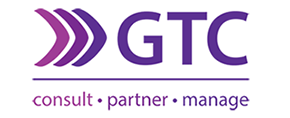Medical aid annual review: six questions to ask before accepting the default option
Annual medical aid premium increases for 2018 are measuring in excess of inflation once again, and this often comes with a decrease in benefit levels. This means consumers will have to make increasingly tough choices should they not wish to be caught on the wrong side of a medical bill.
Regardless of the information available to consumers, it is astonishing how many people do not pay close enough attention to changes in their benefit levels versus premiums payable from year to year.
This is due to the continued perception that medical aids are too complex, even though healthcare advisors are always available to explain changes and their impact.
Reviewing your medical aid changes for the year ahead does not have to be an onerous task – it can be simplified into six questions which every consumer should ask themselves before deciding whether to stick to their current plan or whether a change would bring much-needed savings, or appropriate benefit increases:
- Are you anticipating big medical events for next year?
Life changes such as childbirth, or decisions to have significant elective operations or even special dental treatment done, will require due consideration when evaluating your medical aid for next year. In the case of operations, consumers should not only consider the actual procedure and a possible extended hospital stay, but also the cost of specialists and after-care.
- Would a network plan work for you?
Many medical aids offer a premium discount for using practitioners and hospitals within a certain network. Members should seriously consider these network options, paying special attention to doctors and specialists they may need, as well as whether the hospitals or clinics suit their medical requirements and are suitably geographically located. ‘Downgrading’ to a network plan could offer significant savings with practically the same benefits.
- How far did you get on your Medical Savings Account this year?
It is imperative to take stock of your actual medical aid savings account usage for the previous year. If it is usually depleted by March, you may consider upgrading to a plan that provides for additional savings.
If upgrading is just not a cost-effective option, members would do well to add extra money to a secondary savings account, to prevent unplanned medical expenses eating into your monthly discretionary income.
- How much more can you afford to pay in the coming year?
Review the actual increase of your premium announced by your medical aid and compare it to your salary. In most cases, an individual’s income does not grow at the same pace as medical aid expenses do. Rather than simply carrying on with the usual plan, members should do an honest evaluation of benefit usage and risk undertaken, to decide whether you can still afford your current level of benefits with a lower disposable income.
- Is your medical aid presenting its changes to you?
Individuals should review their medical aid with their professional healthcare advisor who will present the changes for the new year. This may be face to face, in scheduled individual member sessions, through targeted informative emails, or through the distribution of videos made available to explain the expected plan changes for next year.
It’s also important to study the changes to the benefit areas which affect you most and take note of benefit losses or decreases.
- When do you need to make a decision?
Make sure you know the cut-off dates for changes to plan types and ensure that all documentation is submitted on time, if you decide it is time for a change. Reviewing medical aid options is a relatively easy way for consumers to make possible savings in a tough economy.
Asking yourself some simple questions about your needs might save you money in premiums which you ultimately may not need to pay, or ensure that your plan provides adequate cover preventing extra costs eating into your income.
Speak to one of our healthcare consultants on (010) 597-6800 or email jlarkan@gtc.co.za.





